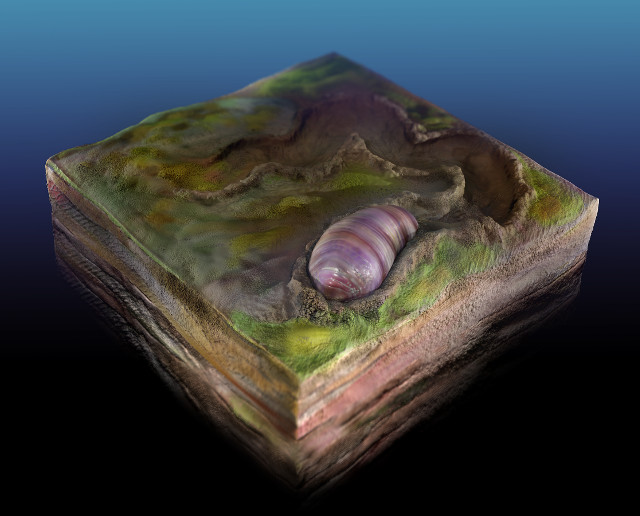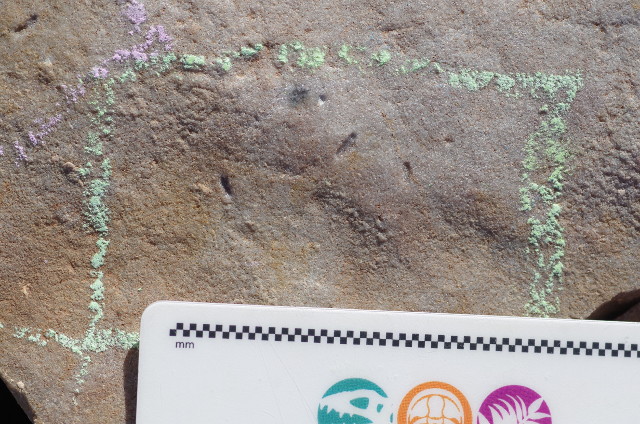
An article published in the journal “Proceedings of the National Academy of Sciences” reports the identification of a worm-like animal that lived around 555 million years ago, in the Ediacaran period, in today’s Australia. A team of researchers led by Scott Evans of the University of California, Riverside, named this tiny creature Ikaria wariootia, identified by the impressions left in the burrows it dug. Its length ranged from 2 to 7 mm for a width between 1 and 2.5 mm, a very small creature which, however, could be a common ancestor to most animals.
The first multicellular organisms had variable shapes and those commonly known as Ediacara Biota were so strange that there are constant discussions about their nature. In many cases, it’s not even clear whether those are animals, plants or something else while there’s an agreement that bilateral symmetry was a crucial step in the evolution of animal life. Genetic studies indicate that the common ancestor of all bilaterals was simple and small, with rudimentary sensory organs.
The research on Ikaria wariootia started from the study of fossil impressions of the burrows dug by these tiny animals, with the traces they left in them. The burrows were dug in thin layers of well-oxygenated sand on the ocean floor, where they sought organic matter to feed on. By studying these burrows, the researchers deduced that these animals already had sensory capabilities, albeit rudimentary. They also had a distinction between their two ends, supported by the direction of the movements in the burrows, which they could accomplish by contracting their muscles.
Ikaria wariootia was very small and formed only of soft tissues, so the researchers were able to study it based only on the laser scans of the impressions left in the sand that petrified. This makes it difficult to accurately evaluate their characteristics, so further studies are needed to verify the conclusions offered. It could really be an animal with bilateral symmetry, but even in that case it’s really difficult to say whether it’s actually an ancestor of most of today’s animals or a branch that became extinct.
The scarcity of fossils is a typical problem in the field of paleontology, and is particularly serious in the case of such ancient organisms. The discussions on Ediacara Biota are due precisely to the difficulty of obtaining reliable information from the fossils of that era, and Ikaria wariootia is no exception. Defining it the ancestor of all animals makes a lot of impression, but it will take much more to prove that such definition is correct.


